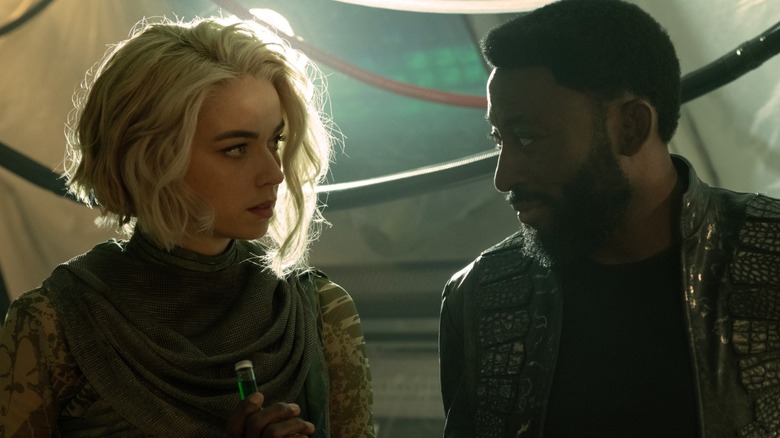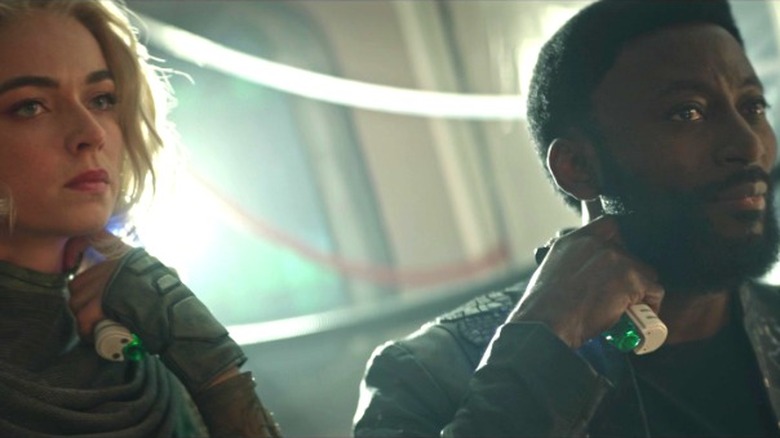Why The Combat-Enhancing Drugs In Strange New Worlds S2E1 Don't Belong In The Star Trek Franchise
Contains spoilers for "Star Trek: Strange New Worlds" Season 2, Episode 1 — "The Broken Circle"
Although peaceful cooperation has long been a central tenant of the United Federation of Planets in the "Star Trek" franchise, the organization does not avoid conflict entirely, with Starfleet Directive 010 allowing members to engage in battle after making "any and all attempts to ... achieve nonmilitary resolution." Indeed, the Klingon and Romulan Empires have both been frequent adversaries.
However, in Season 2, Episode 1 of "Star Trek: Strange New Worlds," Nurse Christine Chapel (Jess Bush) and Dr. M'Benga (Babs Olusanmokun) inject themselves with a powerful substance that allows them to engage in hand-to-hand combat with and easily defeat several Klingon warriors. It's a jarring scene for the typically violence-averse franchise, with two people who are sworn healers letting their baser instincts take over. One might even argue that these combat-enhancing drugs don't belong in a "Star Trek" show at all.
Does the Star Trek franchise really need extended martial arts scenes?
It is important to consider the context in which Chapel and M'Benga take these combat-enhancing drugs. At this point in time in the "Star Trek" franchise, relations with the Klingons are tense at best, with the Federation-Klingon War having ended just two years prior. It turns out, Chapel and M'Benga served on the front lines and as such, have very personal reasons for wanting to prevent another war. However, the violence they unleash is certainly unbecoming of a member of Starfleet.
Although there have been moments in other "Star Trek" properties that see officers come to fisticuffs, these are often because one or both parties have been influenced by external forces. Sure, seeing two medical professionals punching Klingons makes for a good set piece, but do combat-enhancing drugs that temporarily turn people into highly skilled fighters truly belong in "Star Trek"?

